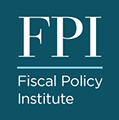Organizations Join Together to Tell Governor that his Vetoes Will Hurt
September 22, 2004. Diverse organizations urge the Legislature to override the vetoes and restore the budget they have already passed. Group press release Preliminary Analysis of 2004-2005 Budget, After Vetoes List of speakers TANF "SURPLUS" SFY 2004-05 Housing and Veterans Disability Advocacy Program Libraries Youth Programs Child Health Plus
